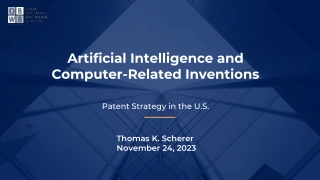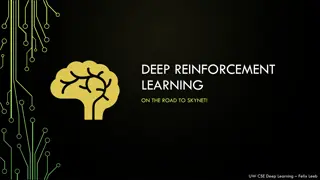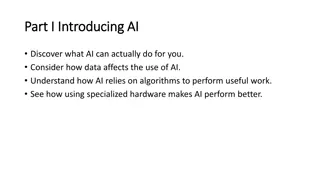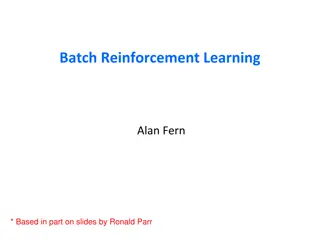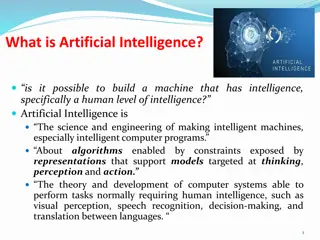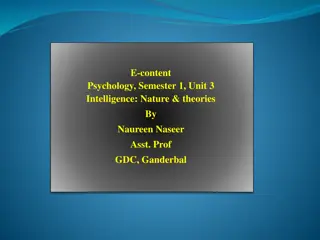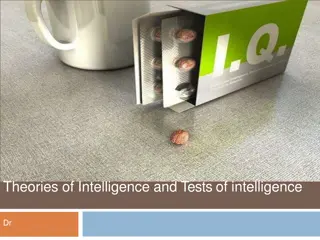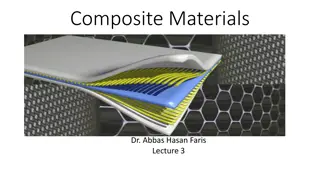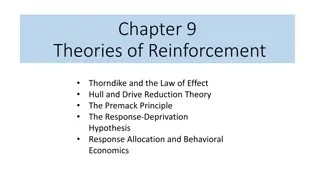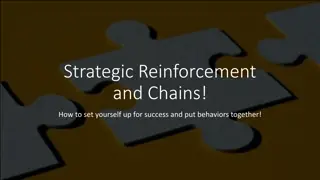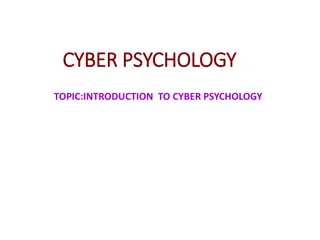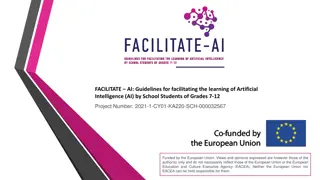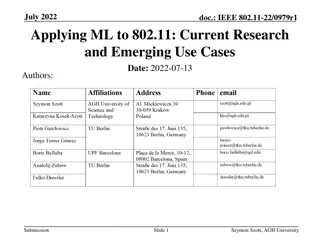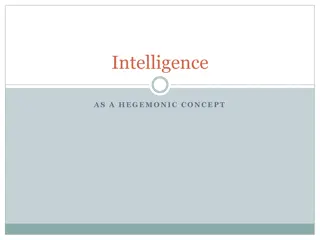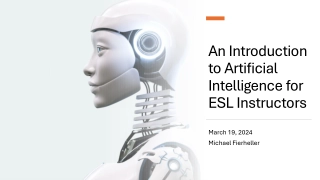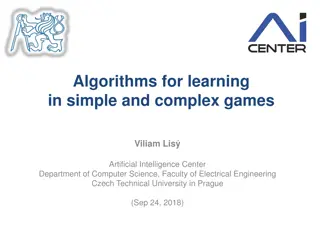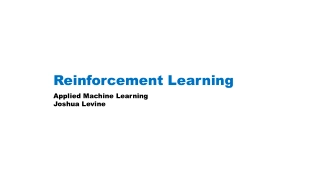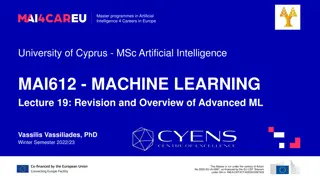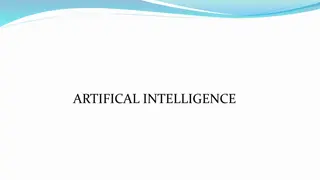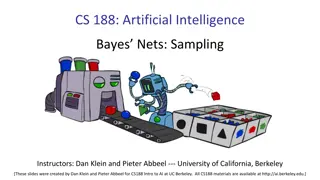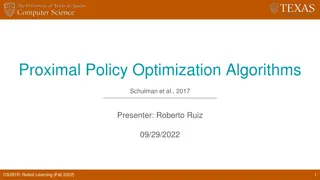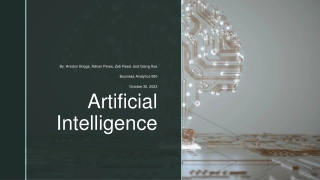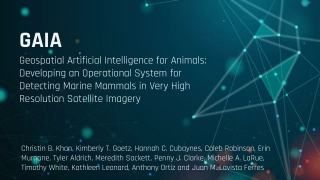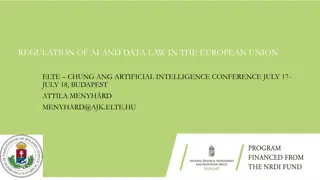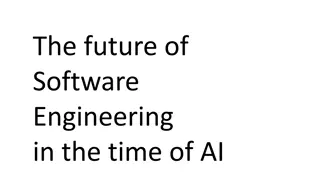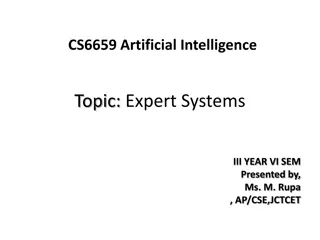Introduction to Reinforcement Learning in Artificial Intelligence
Reinforcement learning offers a different approach to problem-solving by learning the right moves in various states rather than through exhaustive searching. This concept, dating back to the 1960s, involves mimicking successful behaviors observed in agents, humans, or programs. The basic implementation in games like Tic-Tac-Toe showcases the potential of reinforcement learning in machine learning programs, utilizing probabilistic decision-making and learning from opponents. These foundational principles continue to be relevant in the current landscape of AI research.
- Reinforcement Learning
- Artificial Intelligence
- Tic-Tac-Toe
- Machine Learning
- Probabilistic Decision-making
Download Presentation

Please find below an Image/Link to download the presentation.
The content on the website is provided AS IS for your information and personal use only. It may not be sold, licensed, or shared on other websites without obtaining consent from the author. Download presentation by click this link. If you encounter any issues during the download, it is possible that the publisher has removed the file from their server.
E N D
Presentation Transcript
CS 4700: Foundations of Artificial Intelligence Bart Selman Reinforcement Learning R&N Chapter 21 Note: in the next two parts of RL, some of the figure/section numbers refer to an earlier edition of R&N with a more basic description of the techniques. The slides provide a self-contained description.
Reinforcement Learning In our discussion of Search methods (developed for problem solving), we assumed a given State Space and operators that lead from one State to one or more Successor states with a possible operator Cost. The State space can be exponentially large but is in principle Known. The difficulty was finding the right path (sequence of moves). This problem solved by searching through the various alternative sequences of moves. In tough spaces, this leads to exponential searches. Can we do something totally different?? Avoid search
Why dont we just learn how to make the right move in each possible state? In principle, need to know very little about environment at the start. Simply observe another agent / human / program make steps (go from state to state) and mimic! Reinforcement learning: Some of the earliest AI research (1960s). It works! Principles and ideas still applicable today.
Environment we consider is a basic game (the simplest non-trivial game): Tic-Tac-Toe The question: Can you write a program that learns to play Tic-Tac-Toe? Let s try to re-discover what Donald Michie did in 1962. He did not even use a computer! He hand- simulated one. The first non-trivial machine learning program!
Tic-tac-toe (or Noughts and crosses, Xs and Os) Now, we don t want We start 3 moves per player in: 3x3 Tic-Tac-Toe optimal play X s turn O s turn X loss loss 5 Bart Selman CS4700
What else can we think of? Basic ingredients needed: 1) We need to represent board states. 2) What moves to make in different states. It may help to think a bit probabilistically pick moves with some probability and adjust probabilities through a learning procedure
Learn from human opponent We could try to learn directly from human what moves to make But, some issues: 1) Human may be a weak player. We want to learn how to beat him/her! 2) Human may play nought (second player) and computer wants to learn how to play cross (first player). Answer: Let s try to just play human against machine and learn something from wins and losses.
To start: some basics of the machine For each board state where cross is on-move, have a match box labeled with that state. Requires a few hundred matchboxes.
Each match box has a number of colored beads in it, each color represents a valid move for cross on that board. E.g. start with ten beads of each color for each valid move. 1) To make a move, pick up box with label of current state, shake it, Pick random bead. Check color and make that move. 2) New state, wait for human counter-move. New state, repeat above.
Game ends when one of the parties has a win / loss or no more open spaces. This is how the machine plays. How well will it play? What is is doing initially? Machine needs to learn! How? Can you think of a strategy? The first successful machine learning program in history (not involving search) Let s try to come up with a strategy What do we need to do?
Reinforcement Learning Works!!! Don t need that many games. Quite surprising!
Comments Learning in this case took advantage of : 1) State space is manageable. Further reduced by using 1 state to represent all isomorphic states (through board rotations and symmetries). We quietly encoded some knowledge about tic-tac-toe!
2) What if state space is MUCH larger? As for any interesting game Options: a) Represent board by features. I.e., number of various pieces on chess board but not their position.. It s like having each matchbox represent a large collection of states. Notion of valid moves becomes a bit trickier. b) Don t store match boxes / states explicitly, instead learn a function (e.g. neural net) that computes the right move directly when given some representation of the state as input. c) Combination of a) and b). d) Combine a), b), and c) with some form of look-ahead search.



